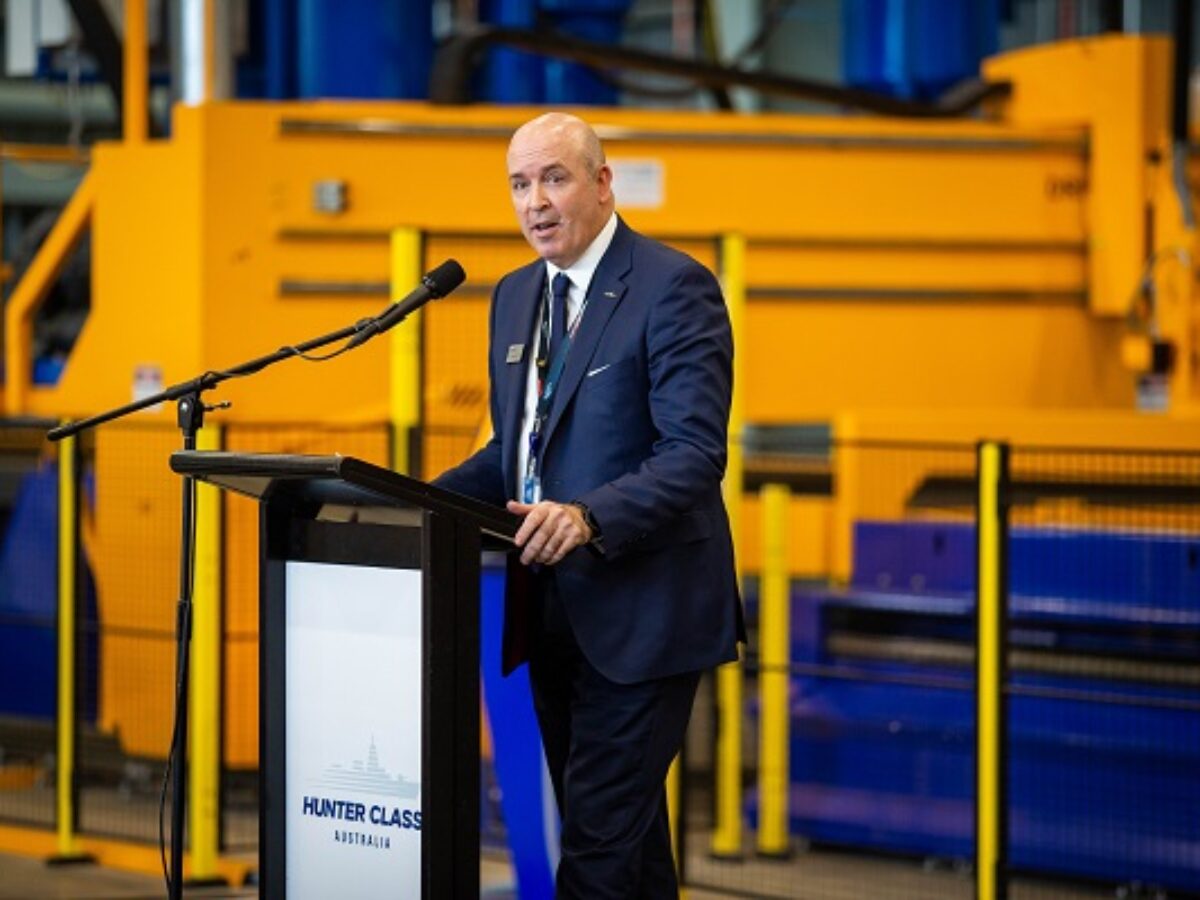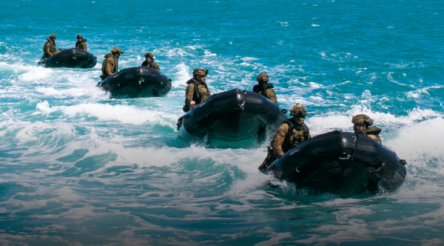Excellence in maritime manufacturing – frigate build makes up lost time says Craig Lockhart

Today @AuManufacturing’s editorial series Excellence in maritime manufacturing turns to the Hunter class frigate programme. In an exclusive interview with Peter Roberts, BAE Systems Maritime Australia’s Craig Lockhart reveals the company has made up 12 months of early delays in constructing Hunter class frigates in Adelaide. He also refutes suggestions the anti-submarine frigates will be overweight.
A year ago European industry was locked down and BAE Systems Australia Maritime had just moved into a new shipyard at Osborne in Adelaide.
As the company set about recruiting a new workforce and bedding down manufacturing systems and the design of the Hunter class frigates it was to build for the navy, Covid and defence concerns kept journalists locked out of the yard built for the company by the federal government.
The media vacuum has been filled by a chorus of criticism no doubt fuelled by competitors of a slippage in construction timetables as engineers sought to integrate new radars and other equipment into what is a design derived from a UK ship.
However, according to BAE Systems Maritime Australia managing director Craig Lockhart, the shipyard is now fully operational and 12 months has been cut from an 18 month schedule slippage revealed in an ‘Engineering Team Assessment’ leaked in February.
Lockhart told @AuManufacturing: “Despite people’s opinion and leaked reports, people should look at where we were 12 months ago and what we have achieved in the past two years.
“Opinions do not do justice to what has been achieved, and to the people who are now building something that is truly unique.”
Lockhart said the company had in 12 months brought a new shipyard and a new workforce to fruition, had transferred a sovereign shipbuilding capability from the UK to Australia, and was now consolidating the first of three prototype ship units into the first ship block. The flow manufacturing process’s ‘pulse units’ are full with following units.
“Our advanced manufacturing process is now building ship units to a quality that has probably never been seen before in naval shipbuilding.”
Lockhart revealed BAE System would begin cutting steel on a further batch of enhanced prototype blocks by June 23.
“We believe these will be considered of a quality that we can use in production of the first ship.
“When we cut steel on these enhanced prototype blocks they will be of a quality where we can repurpose and use in constructing (the future HMAS) Hunter.
“Out of an 18 month delay we will have brought back 12 months…we will be only six months behind then.”
The initial delays were to allow time for the ship design to stabilise and integrate the Australian CEA Phased-Array Radar, the US Navy’s Aegis combat management system and the Saab Australia interface into the design – changes in capability required by the customer were much more complex than initially thought.
This has led to criticisms that Hunter will be ‘overweight’ and thus slower and with less endurance than needed.
These criticisms are usually couched in calls for Hunter – an Anti-submarine Warfare frigate with enhanced capabilities – to be abandoned and replaced with essentially a missile attack vessel. This ignores defence’s need for an anti-submarine capability.
Lockhart, who has 30 years experience in the sector including as Managing Director of Naval Marine for the Babcock International Group, said the 11 major and 37 minor recommendations of the System Definition Review (SDR) – revealed in a leaked Engineering Team Assessment report – had ‘now been closed to the point where we can get into detailed design’.
And he said the 23 key performance indicators covering range, speed, endurance and noise required of Hunter by defence’s Capability Acquisition and Sustainment Group (CASG) and the Royal Australian Navy were still being achieved.
“Yes, the ship is bigger than the reference design, the (UK) type 26.
“The capability requirements that we have incorporated for the RAN have driven us to to produce a different design which is heavier than the reference ship
“But the ship is not overweight.”
BAE Systems has learned from lessons in the Anzac Midlife Capability Assurance Program (AMCAP), which is ongoing at BAE Systems’ Henderson shipyard in Western Australia.
With new, more advanced but heavier communications systems and the addition of a CEA Long Range Air Search Radar being added to the ANZACs, BAE Systems has found weight savings for the eight vessels by using lighter materials in the forward mast house, boat deck, rails and stanchions, external ladders, drainage and scuppers, and platforms, stairs and ladders.
Lockhart said just as the upgraded ANZACs would perform well in service, the Hunter would have more than adequate power reserves to allow for future upgrades and was now ‘well within design margins’.
“We are very confident of its in service performance.
“Where we still have risks in the progress is in supply chain integration, but every nation is seeing significant disruption in supply chain from the point of view of cost, reliability and capability.
“Shipbuilding is always complex and challenging, but that’s what we get paid to do, and we still have work to do to manage that.”
@AuManufacturing’s editorial series Excellence in maritime manufacturing is brought to you with the support of BAE Systems Australia.
![]()
Picture: Craig Lockhart
Subscribe to our free @AuManufacturing newsletter here.
Topics Defence
@aumanufacturing Sections
Analysis and Commentary Awards Defence Manufacturing News Podcast Technology Videos










